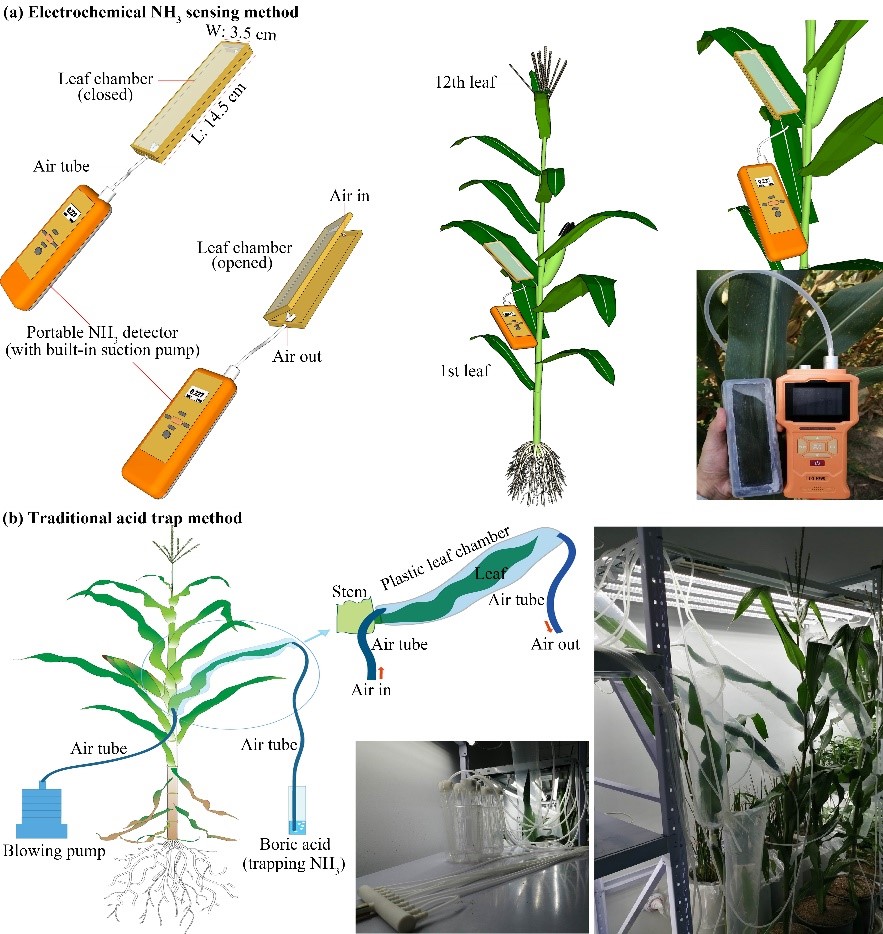
Recently, a research team in the Hefei Institutes of Physical Science of the Chinese Academy of Sciences has developed a novel, non-destructive method for the rapid measurement of leaf ammonia emissions.
The research results were published in Plant Physiology and Biochemistry.
A deep understanding of ammonia emissions in farmlands can greatly support efficient nitrogen (N) management in crop production. However, due to lack of rapid measurement methods, little is known about leaf ammonia emissions.
The new electrochemical sensor-based approach introduced in this study allows for precise and non-destructive monitoring of leaf ammonia emissions with remarkable repeatability, accuracy, and selectivity.
"The sensor's response time ranges between 7 and 22 seconds," said Dr. YANG Yang, a member of the team, "making it suitable for rapid in-field measurements."
Utilizing this method, the researchers observed variations in ammonia emission rates across different foliar ranks in maize. Their results indicated that leaf ammonia emission rates were strongly correlated with several key leaf traits, including chlorophyll concentration, N content, and photosynthetic rate. These findings suggest that ammonia emissions can serve as an indirect indicator of a plant's physiological status and growth condition.
"Our findings provide new tools to promote research on crop N management and N nutrition physiology," added Dr. YANG.
The work was supported by the National Natural Science Foundation of China.

Measuring leaf ammonia emissions with the new method (a) and traditional method (b) (Image by YANG Yang)

Real-time measurements of leaf ammonia emissions with the new method (Image by YANG Yang)